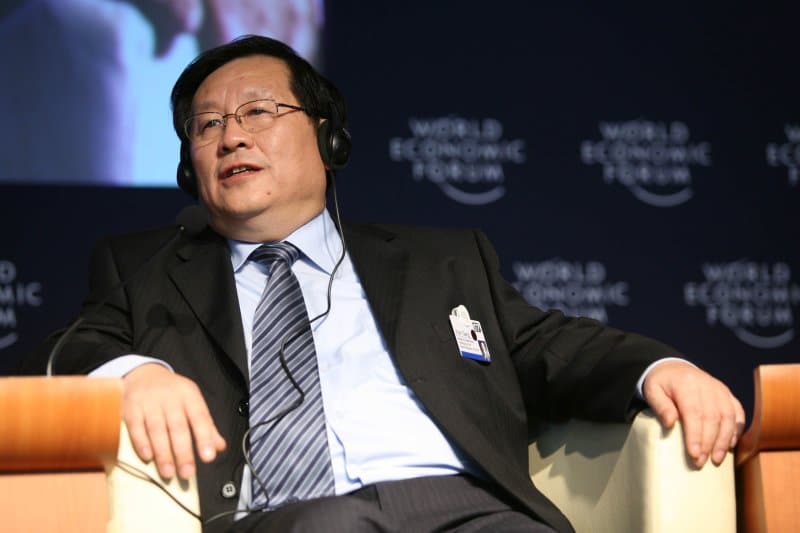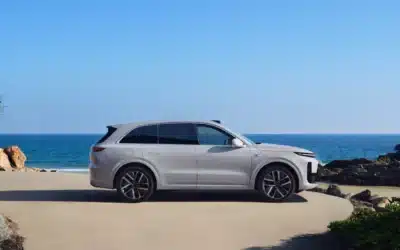The majority of the global auto industry is in flux, trying to pivot and restructure while coping with the aftermath of the pandemic, supply shortages and clean-air legislations. As it fumbles strategies for a future it’s desperately failing to grasp, China has grown its car manufacturing and exports by unprecedented percentages, and rocketed from nowhere to receiving ‘best-seller’ accolades in just a handful of years.
Yup, in July this year (2023), the Chinese-made BYD ATTO 3 was the best-selling electric vehicle in Sweden, putting it ahead of the Volkswagen ID.4. However, before we delve into the phenomenon of China racing towards dominance of the EV market, it’s important to take a moment to appreciate the staggering achievements of the Chinese motor industry.
Chinese Car Production and Export Growth
Back in the year 2000, the United States was top of the car-making nations producing 12.8 million vehicles a year. Japan was second (10.1m) and Germany third (5.5m). By 2010 China was producing 18 million vehicles and just four years later production reached nearly 24 million, which was 26% of the entire global car production.
Fast forward to 2022, and China has not only usurped Germany (which is now not even in the Top Five car-producing nations) but has leapfrogged the U.S. and Japan making 27 million vehicles. The U.S. produced 10 million, and Japan trailed with just 7.8 million.
In 2009 there were 62 million vehicles on China’s roads, by 2017 it had increased to 300 million, and it’s estimated to reach 500 million by 2030!
Similar stunning results can be seen in Chinese automobile exports. In 2010 it exported just over half a million vehicles (545,000), three years ago it sent out nearly a million (995,000), and last year it more than tripled that to 3.32m, becoming the world’s second largest automotive exporter.
In the first quarter of this year, it already appears to have grabbed the top spot having surpassed Japan’s vehicle exports, with year-on-year exports for January to April surging by 76% to 1.5 million vehicles.
EV growth in China
In 2022, China exported 679,000 electric vehicles. To put that into context, just two years earlier the figure was only 225,000 while in 2017 only 105,500 EVs were exported.
Similarly, sales of electric vehicles in China have grown from just over 8000 in 2011, to 1.1 million in 2020, catapulted further to 2.9m in 2021 and then went stratospheric last year with 6.8m. Last year two-thirds of all new electric cars registered in the world were in China. By comparison 2.6m EVs were registered across Europe (an increase of 25%) while in the U.S. it was just 750,000.
Interestingly, in China you need to have a number plate to own a car, but there is a five-year waiting list, alternatively you could win one in a lottery, or buy one at auction for as much as $15,000. Registrations for electric vehicles, however, are easier to obtain.
How did China Get So Good at EVs?
China’s remarkable success in the electric vehicle (EV) sector is a blend of astute government policy, technological innovation, and changing market dynamics. Generous government incentives such as subsidies, tax breaks, and procurement contracts have spurred the rise of numerous domestic EV brands. And these local companies were able to tailor the tech directly to the needs of Chinese consumers, attracting a growing demographic of young car buyers.
The pivotal moment came when China realized it couldn’t outpace established automakers in internal-combustion engine innovation, prompting a strategic shift towards EVs, an uncharted territory. The government’s early investments and prioritization of EV research paved the way.
Wan Gang, an ex-Audi engineer who advocated for EVs, played a significant role when he became the minister of science and technology in 2007 and EV development consistently became a focal point of China’s economic planning. The country actually allocated over $29 billion from 2009 to 2022 to support these measures.

EVs are extremely popular in China. 6.8m were bought in the country last year.
Government contracts for EVs in public transportation also helped. For instance, the aforementioned BYD benefitted from working with the southern city of Shenzhen to make it the first in the world to completely electrify its public bus fleet.
China’s control of critical battery materials, despite lacking abundant natural resources, has been instrumental. It also boasts the world’s best refinery capacity for battery materials such as Lithium hydroxide, graphite, nickel sulfate etc. Chinese EV battery manufacturers now supply a third of global EV batteries.
So successful has EV research, development and production been, that it has forced other nations to attempt to adapt and innovate in the face of China’s rapid advancements.

Wan Gang, an ex-Audi engineer became the Chinese minister of science and technology in 2007 and spurred the development of the EV sector. Picture, World Economic Forum.
Meanwhile, producing cars for companies such as Volkswagen, BMW, Tesla for export, while meeting strict quality assurance guidelines, means that local manufacturing raised its game overall, and Chinese cars now rival the fit and finish of global rivals, despite generally being better value.
China’s progress in the auto industry, and in particular the electric vehicle sector, has been at a rate never seen before. It now has the momentum of an unstoppable force and leads the way in EV tech, innovation and the speed of bringing new cars to market, at affordable prices, yet still meeting the highest quality and safety standards.
Not long ago China was famed for making ‘copycat’ cars, but now it’s the rest of the world’s car industry that is trying hard to emulate China’s success.











